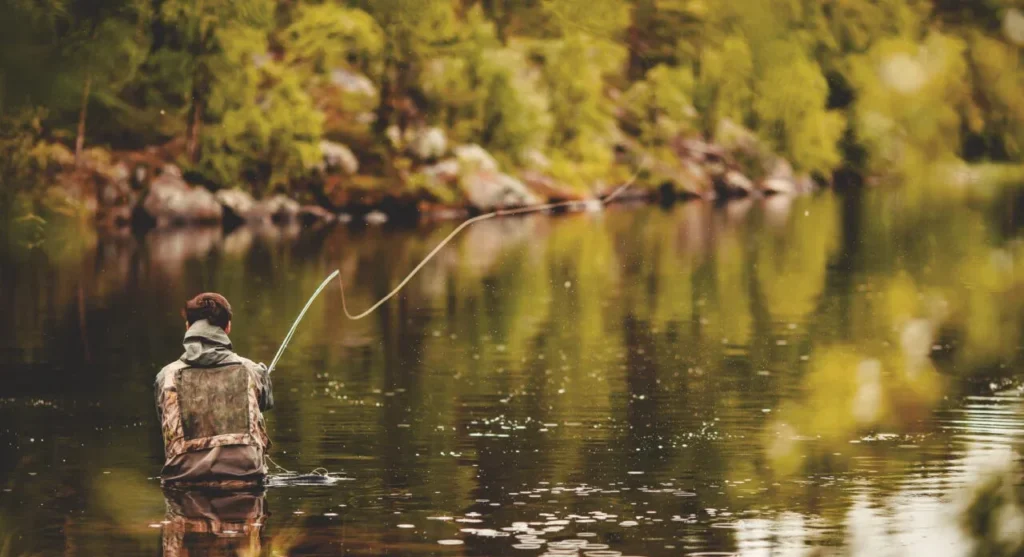With the season just opening on April 1st, here’s a bit of backstory on this historic pastime, thanks to “Trout Fishing in the Catskills.” It’s a beautiful, knowledge packed book by avid fly fisherman and Catskill neighbor Ed Van Put (Skyhorse Publications, New York, NY).
Fishing in the clean clear water of Catskill streams and rivers became a very popular activity in the early part of the 19th century, as city dwellers discovered the clean air, beautiful scenery, and relaxing pace of country life. The Esopus Creek starts at Slide Mountain, flows through the Ashokan Center, turns north, flows through Kingston and enters the Hudson River at Saugerties. It was and still is a favorite destination for anglers.
The fishing craze of the 1800’s was partly inspired by the beautiful and alluring paintings done by Hudson River School Artists like Worthington Whittredge, Sanford Gifford, Jervis McEntee, and Asher Durand. They and many other well known Hudson River School artists were avid fishermen, and Whittredge, Gifford and McEntee often got together for fishing trips to the Catskills often making notes and sketches of their expeditions! There were many publications of the day extolling the joys of trout fishing,such as “Angling in America,” “Sporting Scenes and Sundry Sketches,” and “American Angler’s Guide.” They featured poems, articles and stories touting the virtues of being in nature and tossing a hook and line into pristine, babbling mountain streams.
The advent of train service along Esopus Creek made the sport more accessible and by the 1860’s letters and articles expressing concern for the possible extinction of native trout in the Catskills began to appear in magazines and newspapers. This sparked public awareness about the need to protect and restore trout habitats.
Today, the destructive effects of climate change — invasive plants and insects, and the need to release massive quantities of turbid water from the City’s Ashokan Reservoir — are creating a challenge for trout and the ecological health of Esopus Creek. By providing positive experiences in the out-of-doors we hope the Ashokan Center will continue to inspire stewardship and protection of our natural world.

